|
1987 - A busy year.
1987 was to prove to be a very busy year at the aerodrome with a great deal of work being done on the infrastructure despite the vagaries of the weather, as will be noted later! The first element of these improvements happened early in the year with the delivery of two fuel tanks. These had served European Helicopters Limited at their original base in Stockley Park. As this site was being cleared and the company was settling in to its new home at Denham, the tanks were brought in to replace the old Jet A-1 bowser alongside Hangar M. They were a great improvement making it easier to ensure the essential quality of the fuel.
|
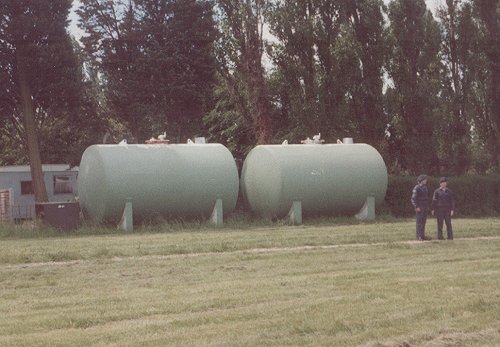
These two Jet A-1 tanks were brought from European Helicopters site in Stockley Park early in 1987.
|
|
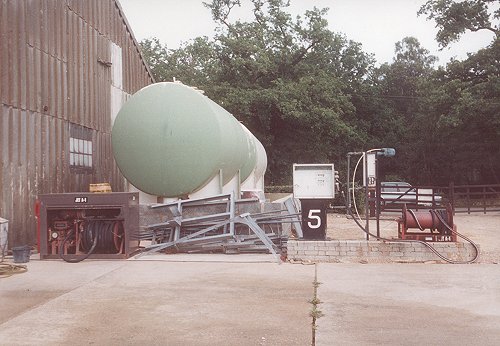
The above two tanks replaced the bowser next to Hangar M.
|
European Helicopter started in the North offices in 1986 and the very small hangar J the following year. They specialised in the highest standards of management of helicopters for local customers'. This included record keeping, maintenance, the provision of pilots and having the aircraft ready and waiting when wanted. They principally operated Aerospatiale AS.350 Squirells, both single and twin engined. They were one of the first companies to excel in this expensive industry bringing the huge potential of helicopters to the notice of some of the public.
|
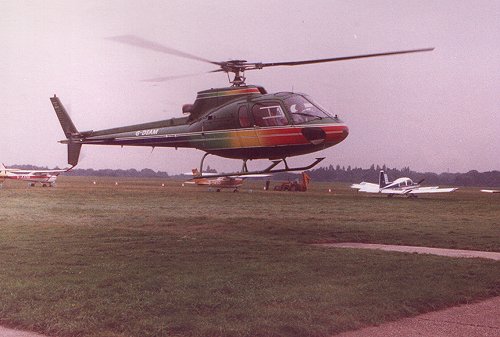
A typical customer of European Helicopters, Aerospatiale AS.350B Single Squirrel G-DSAM.
|
|
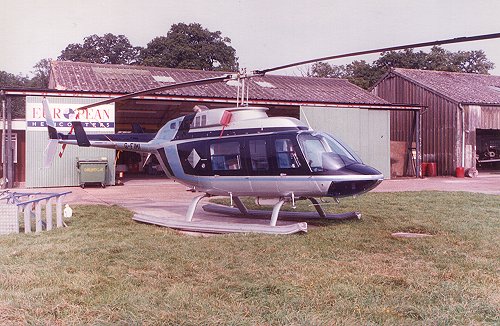
Also typical of European Helicopters' customers of the time is the Bell 206L LongRanger belonging to Lynton Aviation.
|
There were some unusual vistors to Denham in 1987, not to mention large! In July, a de Havilland Canada dHC-4 Caribou landed at the aerodrome, en-route from Kenya to Canada. It had been used in Africa as a cargo aircraft, where its ability to carry an 8,740 lbs (3,964 kg) load in and out of very short bush airstrips had made it extremely useful in this role. The Caribou's long range, in excess of 1,300 miles (2,100 km), meant this aircraft had flown from Kenya to Malta and then direct to Denham. It had been purchased by a Canadian mining organisation for use carrying silver ore from a short strip near one of their mines to the refinery. The sheer size of the aircraft dwarfed all others at Denham, and the fact that such a large aircraft could be comfortably operated from Denham's 775 metre long runway was remarked upon by many.
|
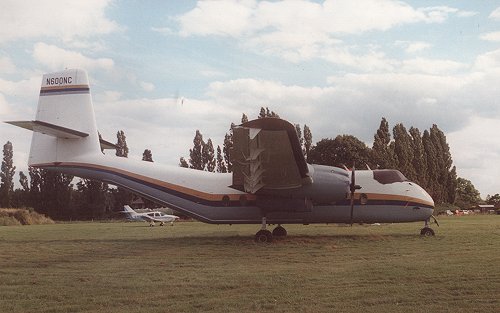
This de Havilland Canada dHC-4 Caribou landed at Denham in July, en-route from Kenya to Canada.
|
|
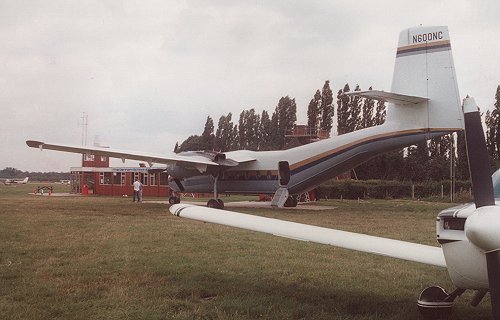
Refuelling and loading the Caribou at the fuel stand, where the tailplane was actually higher than the tower.
|
A regular event at Denham, and one we have not covered before in this history, is the Silverstone Shuttle. The shuttle flew team members, guests and VIPs into the airfield in the centre of Silverstone motor racing circuit. Initially this was a small scale event which involved a handful of privately owned or chartered helicopters. In 1987, this took on a whole new aspect as Ayrton Senna, Nelson Piquet and Nigel Mansell were all in contention for the British Grand Prix, the race the shuttle service was developed to serve. Over the race weekend over 40 helicopters flew back and forth taking passengers to the race days, ranging from the five seat Robinson R44 to the powerful 15 seat Sikorsky S-76. The shuttle was to remain this extensive for a number of years, and special procedures were introduced by Denham's Air Traffice Service Unit for the weekend in order to maintain safety and in consideration of the neighbours.
|
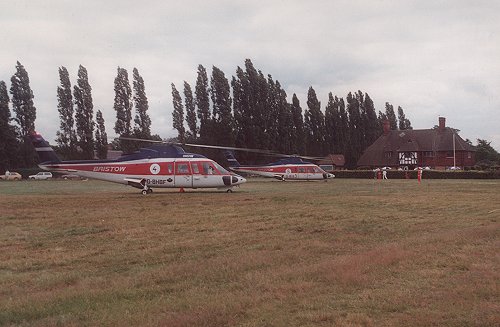
Bristow Helicopters used five Sikorsky S-76s as part of the 1987 Silverstone Shuttle. Two are seen here on the grass in front of Biggles restaurant.
|
Pilot Brian Lecomber had been based at Denham with his Stampe and Pitts aircraft, but 1987 saw him acquire the first of a type with which he was to become synonymous, the Extra family of very high performance aerobatic aircraft. Sponsored by Jaguar cars, Brian began flying air diplays and aerobatic competitions in his brand new Extra 230. It was powered by a 200 hp Lycoming AEIO-360 four-cylinder engine. The steel tube fuselage and tailplane were combined with a plywood skinned wooden wing, resulting in a very clean and efficient airframe. The Extra 230 was both light and strong, weighing only 970 lbs (440 kgs) but capable of being stressed to both + and - 10G. When combined with a maximum speed of 220 mph, the new aircraft was exactly what Brian had wanted to develop his displays and aerobatic abilities.
|
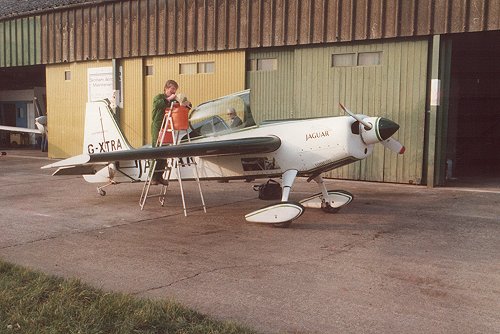
Brian Lecomber with his Jaguar sponsored single seat Extra 230, a new resident at Denham in 1987.
|
This year saw repairs being carried out on the buildings around the aerodrome in the summer and autumn, not least of these being to the pre-war Hangar M. Some of the doors across the front of the hangar had suffered from long use and the vagaries of the British weather so were becoming difficult to open and close. A programme of repairs was undertaken in the late summer, which improved matters greatly. The original brickwork chimneys of Biggles restaurant were also repaired, a task that necessitated extensive scaffolding to be erected across the building.
|

Some of the doors of Hangar M were repaired to make them easier to use.
|
|
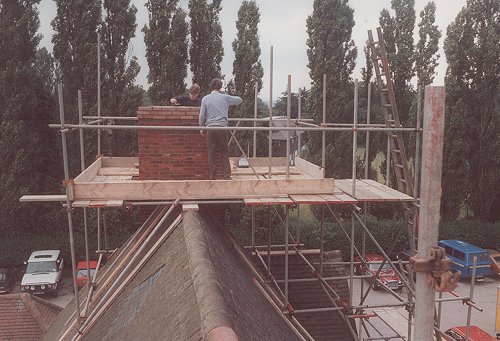
Scaffolding was erected to allow the repair of the brick chimneys at Biggles' restaurant.
|
|
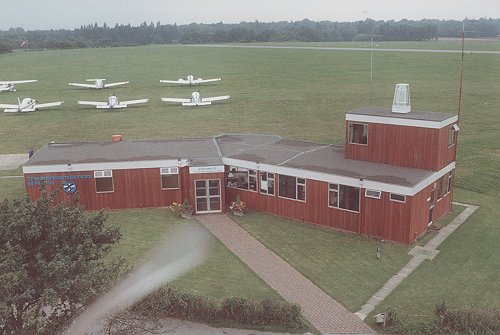
This unusual view of the tower was taken from the scaffolding at Biggles.
|
The most important project of the year was to build a new modern hangar, which became known as Hangar I. Many aerodromes in the United Kingdom had been left after the Second World War with hard runways, taxiways, many offices and sheds and new hangars, some of which were very large. Denham, on the contrary, had its buildings removed to other sites and it took effort and expense to get them back. Many aircraft at this time were parked outside, but it was essential that they were moved inside for maintenance. Those that had sophisticated electrical equipment needed to be kept warm and dry. A plan for a modest hangar was prepared and submitted for planning permission. This was refused. There had been protests from various residents groups and the project was only granted permission on appeal after reducing the size by 25 ft. The old Nissen hut and former cricket pavillion had to be removed to make way for the new hangar. As they were the home of a number of flying groups and clubs, these had to squeeze into the side of the blister hangar. Clearance of the site began in September, and work steadily progressed on the new building as recorded below.
|
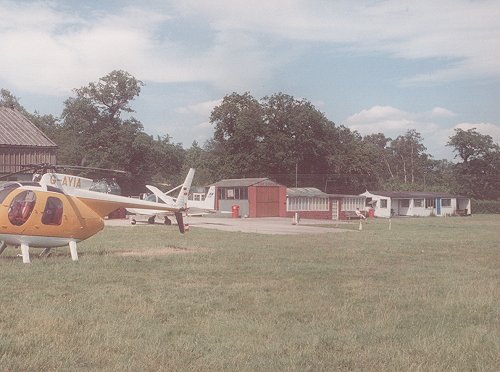 The old fire station, the Nissen hut and the cricket pavillion had to be demolished to make way for Hangar I. The old fire station, the Nissen hut and the cricket pavillion had to be demolished to make way for Hangar I.
|
|
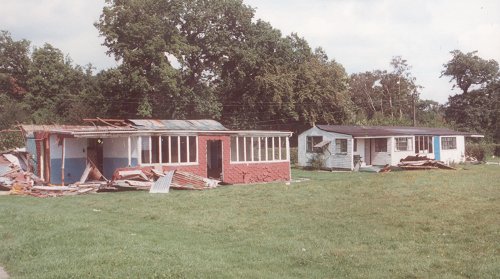
The demolition began with the Nissen hut.
|
|

With the Nissen hut almost down, work started on the pavillion.
|
|
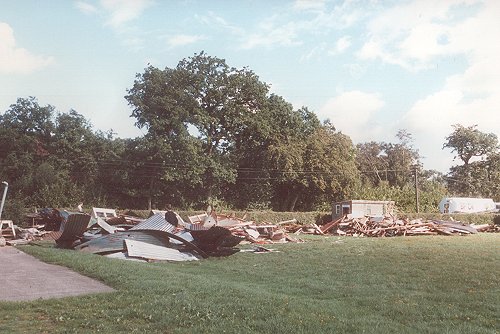
With the buildings demolished, clearance and construction could begin.
|
|
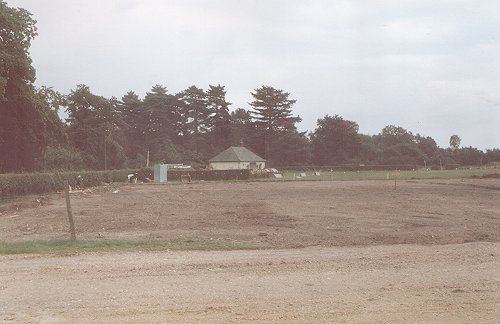
The first task was to level and grade the site.
|
e
| 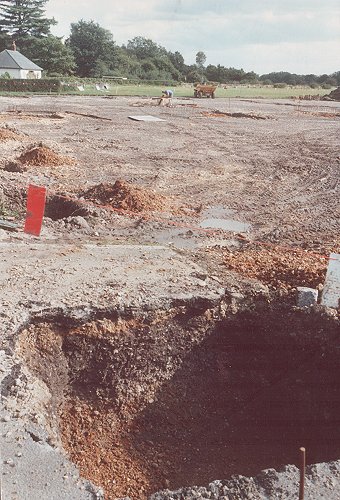
The foundations were started.
|
| 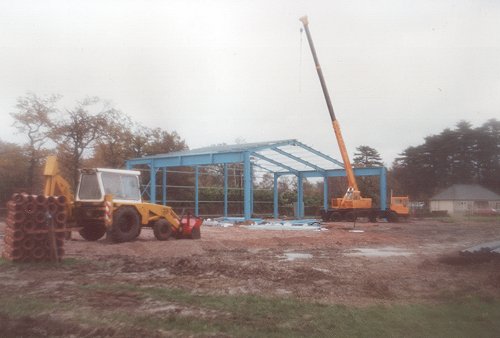
The construction of the main hangar frame was begun.
|
| 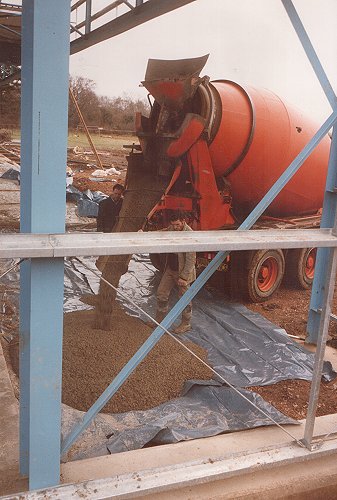
With the frame in place, the concrete floor was started.
|
| 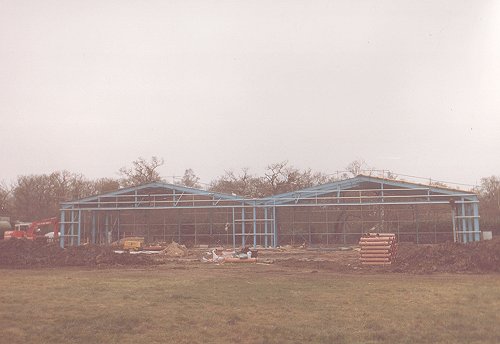
With the frame completed the size of the new hangar could be seen.
|
|

By October, the structure and its cladding were mostly completed.
|
In 1940, Leavesden airfield, on the outskirts of Watford, had been built as an aircraft factory aerodrome for two local companies, Handley Page at Radlett and de Havilland at Hatfield. At the end of the Second World War de Havilland had moved their jet engine and gas turbine divisions to Leavesden. Rolls-Royce took over the plant, but in 1987 decided to close it and move the resources to its Bristol factory. This meant that Leavesden would close and flying from the site would cease. There were a number of flying schools and clubs based there, all of which were looking for a new home. One of these was Tony Ryan's school, the Cessna Flight Centre, which wanted to come to Denham. The school was renamed the Denham Cessna Flight Centre, and a trailer was used as both office and classroom, positioned outside Hangar M.
|
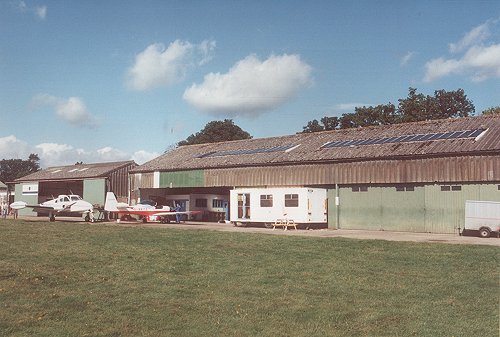
The Denham Cessna Flight Centre initially operated from this trailer outside Hangar M.
|
The Guild of Air Pilots and Air Navigators returned to Denham on 21st June to hold their garden party and air display. The event embraced all aspects of general aviation, from vintage types and hot air balloons to modern competition aerobatic aircraft and specialised racing machines. The new Master of the Guild, Robert Pooley, arrived in one of a number of microlight aircraft that took part in the display. For many years, one of the driving forces behind the success of the GAPAN events was Ron Gillman, BEA Captain and Denham resident who had joined the RAF at the age of 20. This year he was accompanied in commentating and hosting the display by TV personality Raymond Baxter. He also lived in Denham and was an ex-RAF pilot. He was particularly well known for his commentaries at the Farnborough Air Show. The display included a very rare airshow appearance by the world's first supersonic airliner, Concorde, which diverted a training flight from Heathrow to make a low pass. Below is the programme for the display and a selection of photographs of the aircraft that took part.
|

The programme for the 1987 GAPAN garden party and air display.
|
|

The programme for the 1987 GAPAN garden party and air display.
|
|
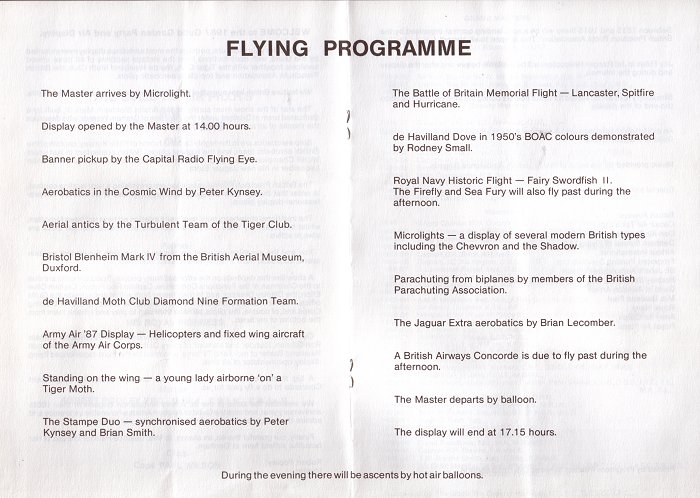
The programme for the 1987 GAPAN garden party and air display.
|
|
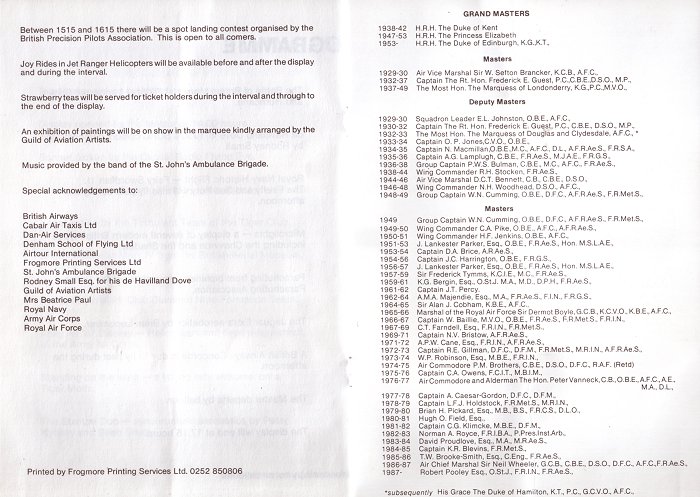
The programme for the 1987 GAPAN garden party and air display.
|
|
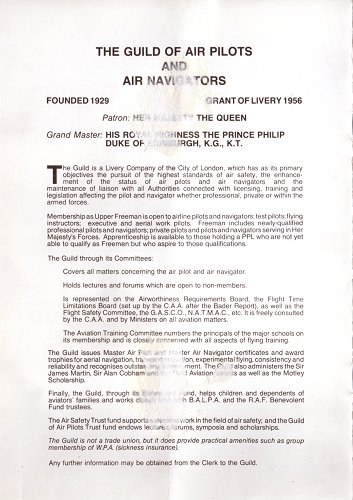
The programme for the 1987 GAPAN garden party and air display.
|
| 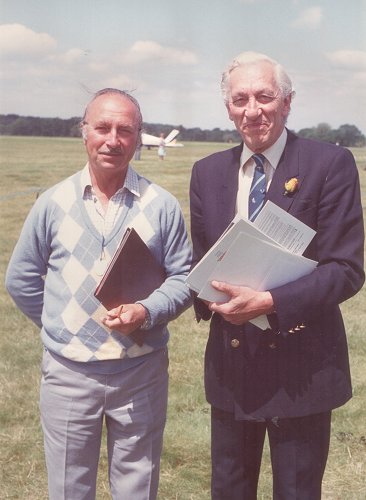
The hosts and commentators of the 1987 GAPAN garden Party were Denham residents Ron Gillman and Raymond Baxter.
|
|
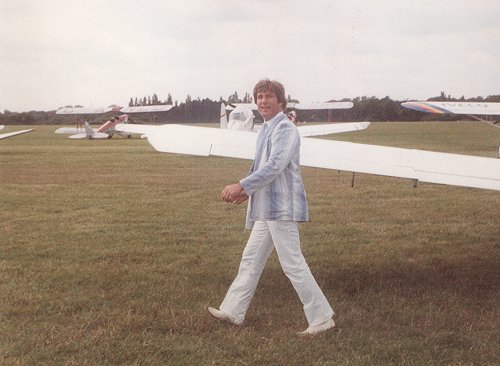
Opening the show in 1987 was Colin Heathcote....,
|
|
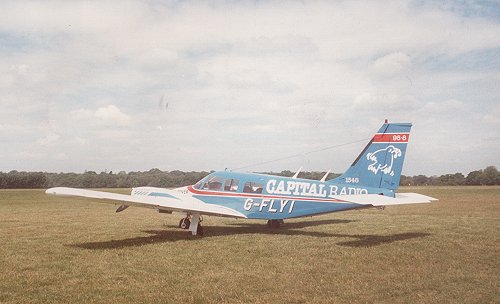
....flying Capital Radio's Flying Eye....,
|
|
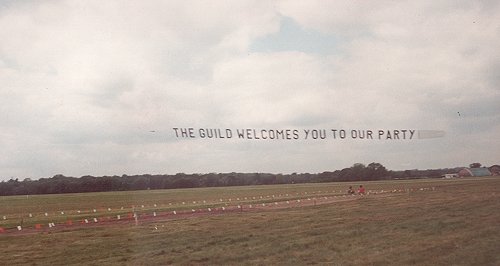
....which towed a banner welcoming guests to the event.
|
|

The new Master of the Guild, Robert Pooley, arrived by microlight and was later to depart by hot air balloon.
|
|
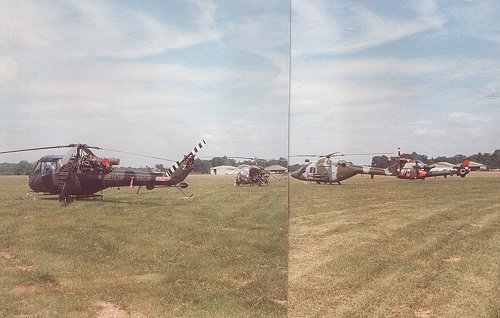
The Army Air Corps attended in force, bringing their vintage Scout and Sioux helicopters along with the current Lynx and Gazelle.
|
|
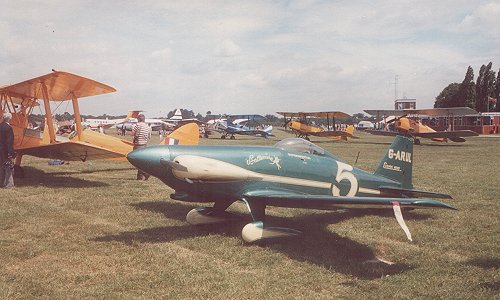
The LeVier Cosmic Wind was intended as a Formula 1 racing aircraft, but was also an excellent aerobatic machine, as Pete Kynsey proved during the display.
|
|
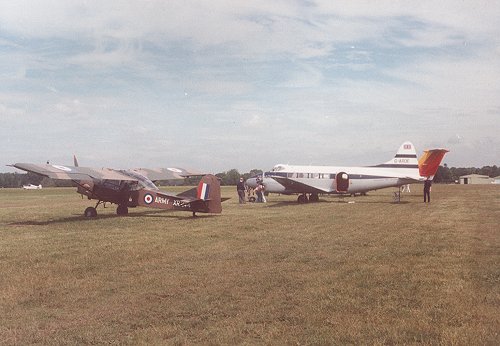
The Army Air Corps also brought their vintage Auster AOP Mk9, seen here next to a de Havilland Dove in BOAC markings and United Biscuits' Super King Air.
|
|
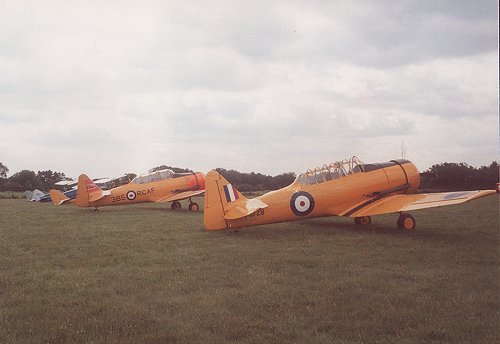
Vintage visitors to the display included two North American T.6 Harvard trainers.
|
|
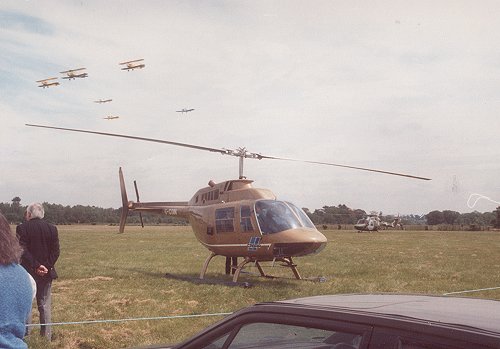
The Tiger Club provided their Tiger Moth and Turbulent team displays, while Cabair flew passenger joy rides in this Bell 206 Jet Ranger.
|
|
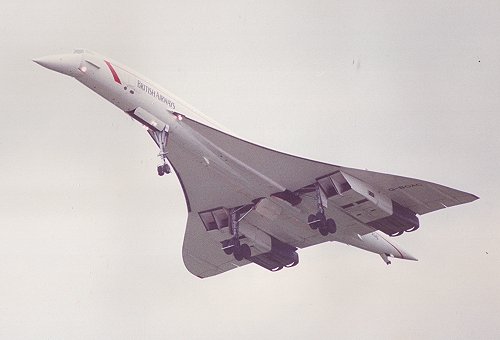
The magnificent and sadly missed beauty of Concorde graced the skies over Denham in a rare air display appearance.
|
|
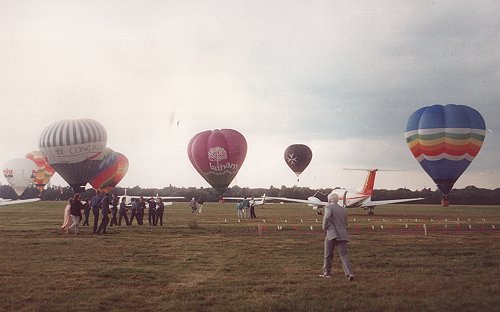
The day ended with a massed ascent by hot air balloons, a colourful spectacle.
|
The air display was marred by a very unfortunate mishap. It was even more unfortunate because the aircraft concerned had only returned to flight a few months before, after nearly a decade of patient restoration involving over 40,000 man hours of work. The British Aerial Museum, based at Duxford, had acquired a Bristol Blenheim Mk IV, a very rare aircraft, and had restored it to flight, making it the only flying Blenheim in the world. The aircraft was scheduled to appear at the GAPAN display, but during a touch and go landing the engines suffered a "rich cut", and only the starboard engine developed power. The Blenheim was unable to climb and landed heavily on the golf coursse. Both engines were torn off and the nose crushed. The pilot was a professional airline captain who had generously given his time to fly the aircraft but had only four and a half hours on type flying from a much longer runway. Also on board were two of the ground engineers who had spent a great deal of time rebuilding the aircraft. Fortunately, all three only suffered minor injuries. The fire and rescue vehicles on the aerodrome had been manned by volunteers from both the local and Heathrow's fire brigades due to the air display, and Leading Fireman Ian Goodfellow from Heathrow was instrumental in freeing the pilot from the cockpit, both passengers having extricated themselves from the aircraft. As there was no fire and no serious injuries, the organisers elected to continue the event.
|
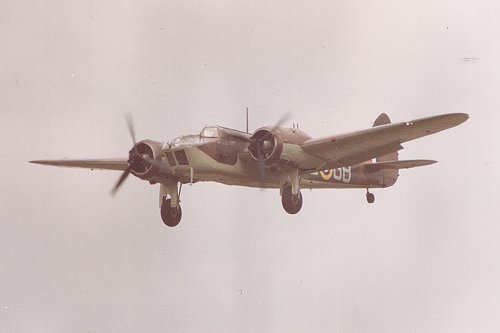
British Aerial Museum's beautiful Bristol Blenheim Mk IV, shortly before the accident at Denham.
|
|
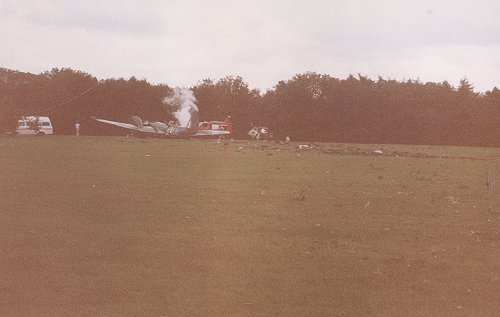
The Blenheim on the golf course. The fire crews attended very quickly and found all three on board had only suffered minor injuries.
|
|
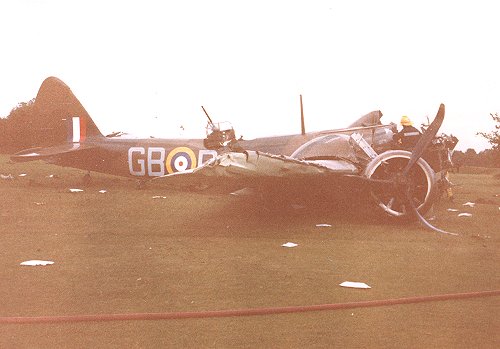
Leading Fireman Ian Goodfellow from Heathrow's Fire and Rescue Service used a ladder to reach the cockpit to free the Blenheim's pilot.
|
The air display incident was not the only event to mar Denham's fortunes in 1987. On the night of the 15th to 16th of October, a storm struck southern England bringing torrential rain and hurricane force winds. Aside from the damage to buildings caused by the wind, a number of aircraft were destroyed on the aerodrome, being turned over or crushed by other aircraft as they were blown about by the unprecedented force of the storm. Aside from the wind damage, areas of the aerodrome were flooded by the monsoon-like rain that fell. Fortunately, the new Hangar I, still under consruction, was of modern design and survived the battering with little damage. The process of clearing up the mess was to take several weeks but the aerodrome slowly returned to normal.
|

This Grumman AA-5B Tiger was crushed when another aircaft turned over on top of it during the storm of October 1987.
|
|
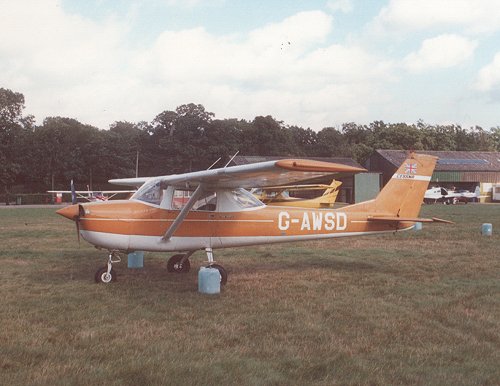
This Cessna 150 was flipped onto its back and badly damaged by the strong winds.
|
| 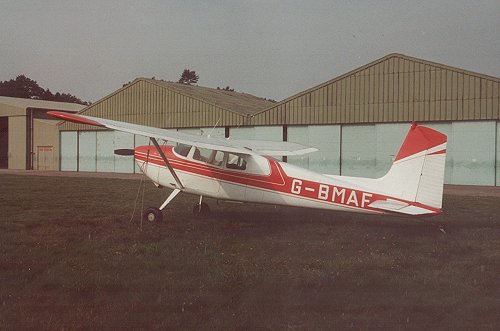
Peter Scales' Cessna 180 was damaged when it was blown into the aerodrome fence, but was repaired and is now operated in New Zealand.
|
|
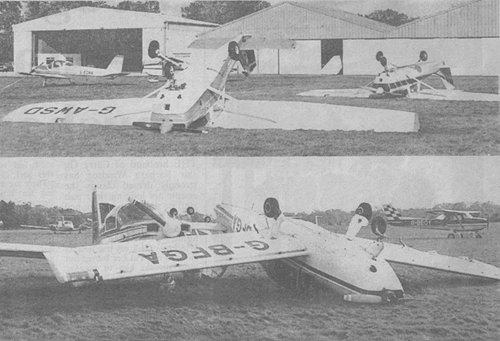
The local paper showed the carnage wreaked across the aerodrome by the storm of October 1987.
|
|
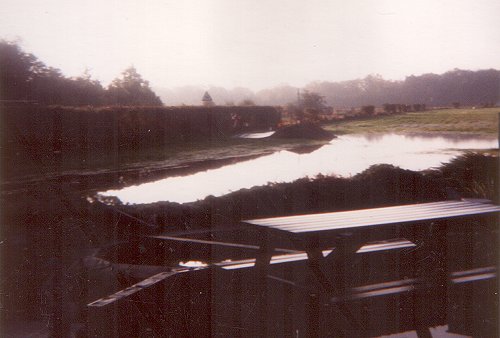
Aside from the hurricane force winds, the October storm also brought with it torrential rain, resulting in flooding on the north and east sides of the aerodrome.
|
Although the year was beset with several unfortunate events, 1987 also had some successes. The most important was the construction of the badly needed new hangar. This successful trend was to continue, as will be related next.
|
|

